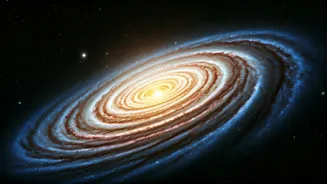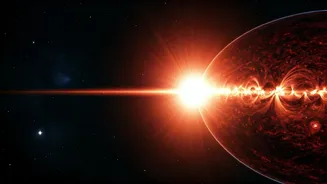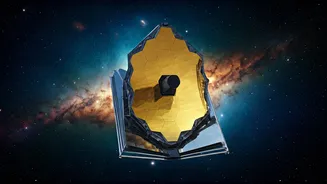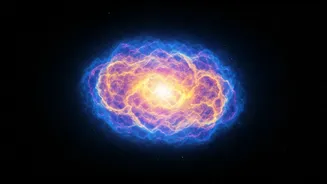A Cosmic Discovery
The spiral galaxy NGC 4102, observed through the lens of the Hubble Space Telescope, presents a stunning view, appearing calm and composed. However, appearances
can be deceiving. Beneath this tranquil facade lies a hidden source of immense power: a supermassive black hole residing at its center. This discovery is a testament to the capabilities of advanced space-based observatories and highlights the dynamic nature of galaxies. The observations were further enhanced by the use of the Chandra X-ray Observatory, which provides complementary data to deepen our understanding of this celestial object. The combination of data from both instruments allows for a more comprehensive investigation into the galaxy’s hidden activity. This research gives invaluable insights into how these colossal black holes shape their host galaxies and the surrounding cosmic environment.
Hubble's Unveiling Powers
Hubble's contribution is critical in capturing NGC 4102 in exquisite detail. The telescope's sharp vision provides an in-depth view of the galaxy’s structure, allowing astronomers to see the distribution of stars and the overall spiral arms. This visual information is crucial for understanding the galaxy’s formation and evolution. This improved clarity helps to reveal subtle features that might otherwise remain unseen. The images collected by Hubble, combined with data from Chandra, create a more complete picture of what is happening in NGC 4102. Hubble’s capacity to detect visible light, coupled with Chandra's ability to measure X-rays, gives scientists a multi-faceted approach to analyzing the galaxy's inner workings. The result of these observations sheds light on the presence and effect of the supermassive black hole and its influence on the galaxy.
Chandra's X-ray Insights
While Hubble offers visual splendor, Chandra's role is equally important. Chandra observes the galaxy in X-ray wavelengths, which are invisible to the human eye, to detect high-energy processes and the activity around the black hole. The X-ray data helps to identify and study the outflow of energy and matter from the supermassive black hole. The combination of these data sets from Hubble and Chandra is a great way to observe the supermassive black hole and its effects on the galaxy. Analyzing the X-ray emissions allows scientists to gauge the black hole's mass and the rate at which it is consuming surrounding material. This data provides additional context that helps to understand the hidden dynamics within NGC 4102. Chandra's data gives crucial insights that add to a more complete and accurate understanding of the galaxy.
AGN: A Nearby Target
NGC 4102 is especially valuable for studying active galactic nuclei (AGN). Active galactic nuclei are galaxies with supermassive black holes at their cores that are actively accreting matter, producing intense radiation across the electromagnetic spectrum. Because NGC 4102 is relatively nearby, it offers a great opportunity to explore the AGN phenomenon. Studying a galaxy like NGC 4102 gives us the opportunity to study the AGN phenomenon in detail, allowing astronomers to collect clear data and to test models and theories. By examining NGC 4102, researchers can increase their knowledge of how these powerful objects influence the evolution of galaxies and the wider cosmos. This focused research offers a more precise look at the processes that drive AGN activity and can give a broader picture of how they affect the evolution of the cosmos.
Black Hole's Influence
At the heart of NGC 4102 lies a supermassive black hole, a gravitational giant with a mass millions or even billions of times greater than the Sun. Its immense gravity influences the galaxy's structure and activity. As the black hole consumes surrounding matter, it releases enormous amounts of energy. This energy can drive powerful jets of particles and radiation that impact the galaxy's surroundings. Analyzing the black hole's influence helps scientists understand how these objects shape their host galaxies and their surrounding cosmic environment. This understanding helps to illuminate the intricate interactions that occur in these distant galactic ecosystems. The study of NGC 4102’s central black hole and its impact gives more profound insights into the formation and evolution of galaxies. This understanding helps astronomers to know more about the influence that black holes have on the universe.













